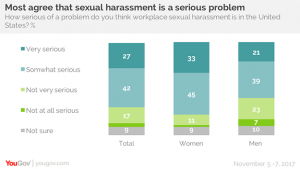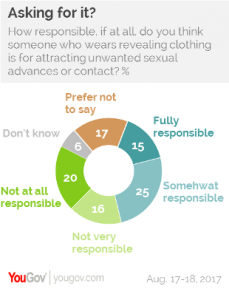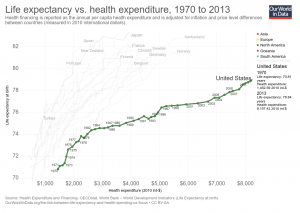 YouGov asked the question, How serious of a problems do you think workplace sexual harassment is in the United States? Very serious or somewhat serious was the response of 70% of the respondents.
YouGov asked the question, How serious of a problems do you think workplace sexual harassment is in the United States? Very serious or somewhat serious was the response of 70% of the respondents.
But for women it is a greater concern: 78% of women say sexual harassment in the workplace is a serious problem today, and 33% of women say it is a very serious problem). 60% of men agree it is a serious issue, with 21% calling it very serious.
The article has more questions and graphs. The most interesting may be the breakdown by gender and political party.
However, Republicans are less likely than Democrats to say sexual harassment in the workplace is a serious problem in the United States – and that’s especially true among Republican men. Democrats – both men and women – are more likely to describe workplace harassment as a very serious problem. But there are big differences between Republican men and women. Seven in ten Republican women say sexual harassment in the workplace is a serious problem; less than half of Republican men agree.
Republican men have a very different view on this issue. At the bottom of the article there is a link to the data, which can easily be incorporated into a stats class followed by an interesting classroom discussion.




 The EPI has detailed report on CEO pay,
The EPI has detailed report on CEO pay, 

 How much has pretax income grown by earner percentiles? The graph here, from Chicago Booth Review’s article
How much has pretax income grown by earner percentiles? The graph here, from Chicago Booth Review’s article 